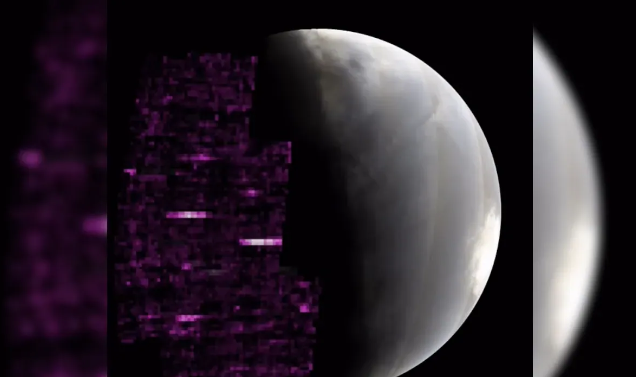Purple Rain on Mars: MAVEN Captures Stunning Purple Aurora (GS Paper 3, Science)

Introduction
- In a remarkable display of cosmic beauty, NASA's MAVEN orbiter recently captured and documented a rare phenomenon on Mars: a vivid purple aurora.
- This celestial light show, observed by MAVEN's Imaging Ultraviolet Spectrograph, offers a glimpse into the unique atmospheric interactions occurring on the red planet.
Understanding Martian Auroras
- Auroras, commonly known as northern or southern lights on Earth, are produced when charged particles from the solar wind collide with atoms in a planet's atmosphere.
- On Mars, which lacks a global magnetic field comparable to Earth's, these charged particles interact directly with the atmosphere.
- This interaction results in auroras that are different from those seen on Earth, spanning larger areas and sometimes displaying distinct colors, such as the recent purple hue observed by MAVEN.
- The purple aurora captured by MAVEN from May 12 to May 20, 2024, occurred during a period of heightened solar activity, when energetic particles bombarded Mars' upper atmosphere.
- These particles likely interacted with specific gases in the atmosphere, causing them to emit light in the ultraviolet spectrum, appearing purple to the orbiter's instruments.
Scientific Insights from MAVEN
- Launched in 2013, MAVEN (Mars Atmosphere and Volatile Evolution) is a crucial mission designed to study Mars' atmosphere and its evolution over time.
- One of MAVEN's primary objectives is to understand how solar winds and other factors contribute to the erosion of Mars' atmosphere and the loss of volatile compounds into space.
- Through its observations, MAVEN has not only captured stunning imagery of Martian auroras but also discovered various types of auroras unique to Mars.
- These include "Christmas Lights" auroras, caused by interactions with different atmospheric gases, and proton auroras, which reflect complex interactions between the solar wind and Mars' upper atmosphere.
Implications of the Discovery
- The detection of a purple aurora on Mars is not only visually captivating but also scientifically significant.
- It underscores MAVEN's role in advancing our understanding of Martian atmospheric dynamics and climatic history.
- By studying these phenomena, scientists can glean insights into how Mars' atmosphere has changed over billions of years, from a potentially more hospitable environment to its current cold and arid state.
- Moreover, these findings have implications for future Mars missions and our quest to determine the planet's past habitability and potential for supporting microbial life.
- Understanding the processes behind Martian auroras also contributes to broader planetary science, aiding in the study of other worlds with similar atmospheric characteristics.
Conclusion
- "Purple Rain on Mars" epitomizes MAVEN's contributions to planetary exploration and scientific discovery.
- Beyond its aesthetic appeal, this phenomenon provides a deeper understanding of Mars' atmospheric processes and evolution.
- As MAVEN continues to unravel the mysteries of the red planet, each discovery brings us closer to comprehending the complex interplay of forces that shape our solar system's diverse worlds.


